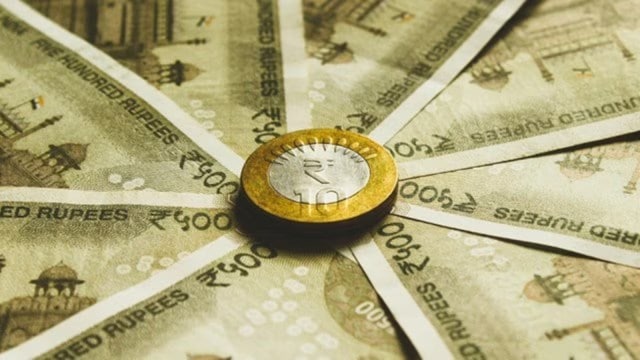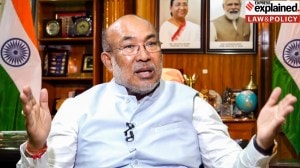How the falling rupee could increase financial burden on companies that went for overseas borrowing
As rupee continues to weaken, companies that raised funds when the rupee was stable at around 82-83 will be forced to reassess their financial strategies
 The rupee has fallen 2.12 per cent since December 2024. (Representative/ File)
The rupee has fallen 2.12 per cent since December 2024. (Representative/ File)The fall in the rupee’s value is expected to increase the financial burden on Indian companies that have borrowed funds from overseas lenders. With the rupee depreciating, these companies that benefited from the Reserve Bank of India’s then borrower-friendly foreign exchange management and the resultant strong rupee, will now have to shell out more money to repay their foreign debts.
Furthermore, companies that have not hedged their overseas borrowings to compensate for the rupee’s decline could incur significant losses. The ongoing depreciation of the rupee will erode the value of their repayments, leaving them with a substantial financial shortfall.
This development is likely to have far-reaching implications for Indian companies that have relied heavily on external commercial borrowings (ECBs) to fund their operations. As the rupee continues to weaken, these companies, which raised funds when the rupee was stable at around 82-83, will be forced to reassess their financial strategies and explore ways to mitigate the impact of the currency’s decline. The RBI has apparently changed its strategy and appears to be allowing the currency to depreciate in line with other global currencies.
According to the RBI, on a cumulative basis, ECB registrations ($33.8 billion) as well as disbursements ($ 30.9 billion) during April–November 2024 were higher in comparison with the corresponding period last year. Adjusting for ECB outflows on account of principal repayment of $ 17.4 billion, net ECB inflows ($ 13.5 billion) during the current financial year was more than double than a year ago ($ 5.6 billion). Non-banking finance companies (both private and PSUs) led the fund-raising exercise through the ECB route.
Cumulatively, during 2023-24, registrations (at $ 49.2 billion), disbursements (at $ 38.4 billion) as well as net inflows (at $ 9.5 billion) under ECBs were substantially higher than the levels recorded in 2022- 23, the RBI said. More than 70 per cent of ECBs raised during 2023-24 were effectively hedged in terms of explicit hedging, rupee denominated loans or loans from foreign parents, limiting the impact of external shocks, the RBI said in the ‘State of the economy’ report.
Almost one-third of foreign borrowings of Indian firms is not hedged. Indian companies that raised or have proposed to raise funds through ECBs over the last 36 months include: Reliance Industries Ltd ($1 billion), Bajaj Finance, InterGlobe Aviation, REC ($500 million), Tata Motors Finance ($200 million), L&T Finance Holdings ($125 million), Shriram Finance ($750 million), HDB Financial ($250 million), Cholamandalam Finance ($250 million), Tata Capital Housing Finance $100 million) and Manappuram Finance ($100 million).
According to Madan Sabnavis, Chief Economist, Bank of Baroda, the recent depreciation in rupee is a concern especially as companies may not have hedged currency risk. In the current state they may have to weigh the advantage of lower rates with higher forex risk. “Cost of hedging is up as seen in forward rates. But companies will watch and see how the RBI looks at the rupee and defends the same,” Sabnavis said.
On $38.4 billion disbursements in 2023-24, as much as $ 11.52 billion is not hedged for currency risk, leaving those companies that raised this money at considerable currency risk.
The rupee has fallen 2.12 per cent since December 2024. When the rupee declines, the value of the dollar increases relative to the rupee. This means that Indian companies with ECBs will have to pay more rupees to service their foreign currency-denominated debt.
A weaker rupee can lead to higher interest rates on ECBs, as lenders demand higher returns to compensate for the increased currency risk. Sustained depreciation of the rupee can also lead to a rise in foreign portfolio outflows from the stock markets.
“The moot question is that the RBI kept the rupee stable for quite some… this worked out in favour of companies. The economic scenario has changed, India’s export competitiveness was eroded and there is an economic slowdown. The central bank had to sell dollars to prevent a slump in the rupee. But it can’t go on depleting the forex kitty and they will have to allow the rupee to depreciate. This has gone against companies that raised funds through ECBs,” said an analyst with investment banking group.
There could be more trouble in store for the overseas borrowers. “New (RBI) governor has been dealt an impossible hand, inheriting an unsustainable policy and level of the rupee. He is much more victim than perpetrator… has to decline: the only question is how much?” former Chief Economic Advisor Arvind Subramanian said in a post on X (Twitter).
“The RBI’s own calculations suggest large over-valuation: so the rupee has to decline a lot more especially if the US imposes tariffs. Only 2 choices for the RBI are: allow gradual rupee decline or accept large, discrete decline. Both are problematic and painful,” Subramanian wrote.
“Gradual decline will not head off speculative pressure which could intensify. Discrete decline could stem pressure but disrupt firms and the economy. All this will unfold in real time amidst clamour an pain. Economy will have to brace itself for unavoidable turbulence,” Subramanian wrote on X.
“The depreciation pressure on the rupee is stemming largely from a stronger dollar. Even so, India’s strong fundamentals have limited the slide in the rupee, with the depreciation in the domestic currency lower than other global currencies, in terms of spot rates, NEER basis as well as inflation adjusted basis,” Bank of Baroda said in a report.
“This also suggests that we can expect a further depreciation in the rupee of 20-30 paise from current levels in real terms and in nominal terms by 1.4 per cent,” it said.
Significantly, the RBI ‘State of the economy’ report says that 40 per cent of the total ECBs registered during April – November 2024 was related to capital expenditure, including on-lending and sub-lending. This raises the question about the utilisation of the remaining 60 per cent. It raises doubts whether these companies used the ECBs to repay costly domestic borrowings.
A section of the analysts expects the rupee decline to benefit some segments. ‘A weakening Indian rupee is likely to favour foreign investments, especially from NRIs, in the real estate market. This is expected to drive growth in the luxury segment, where their contributions are significant. However, from an NRI investment perspective, exit realizations and rental income will be less favourable due to weakening of Rupee against major currencies,” Divyesh Shah, Director, CareEdge Ratings.
Feb 13: Latest News
- 01
- 02
- 03
- 04
- 05







































